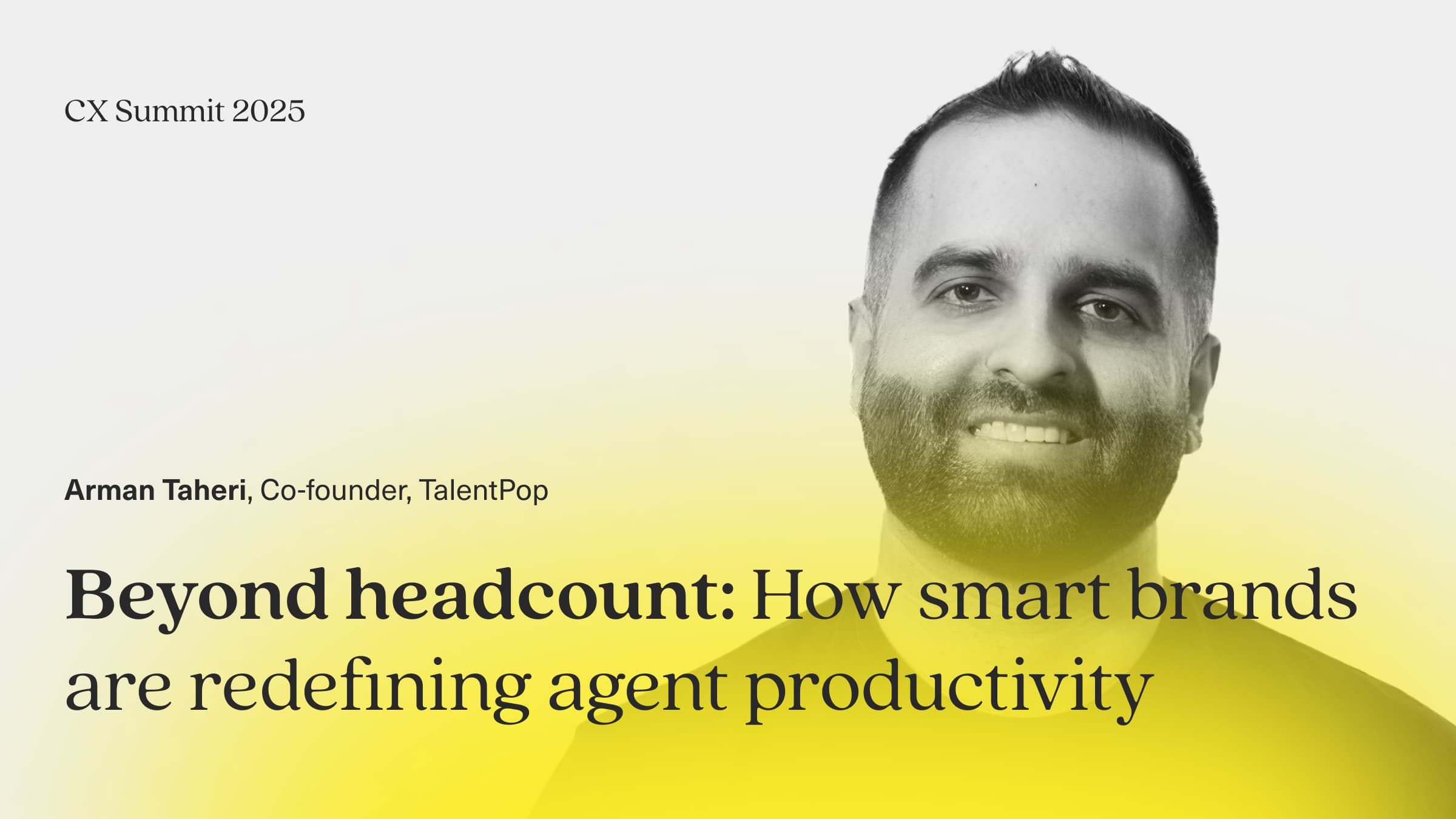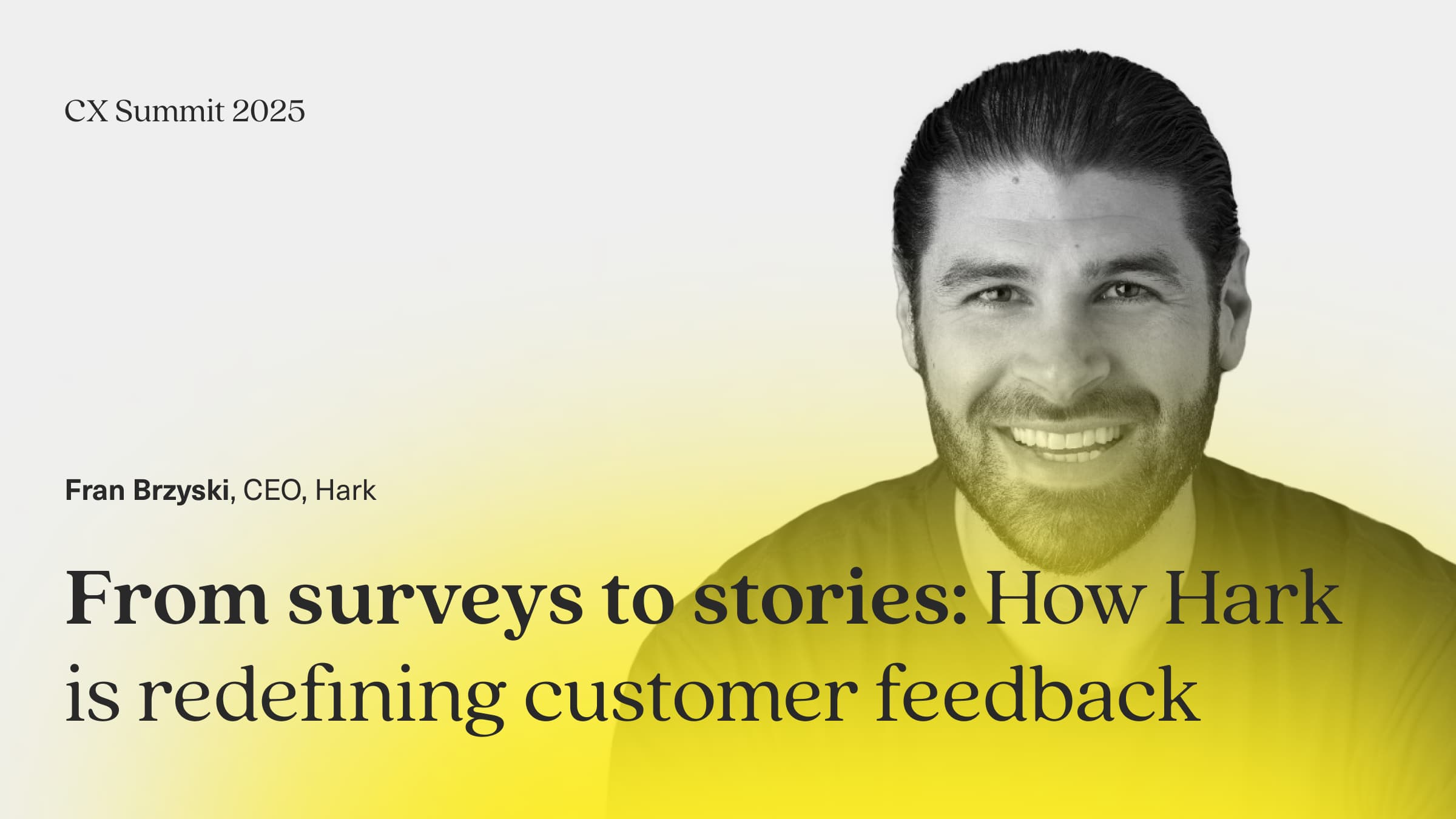Arman Taheri is the co-founder of TalentPop which focuses on customer experience for ecommerce brands by helping with recruiting, onboarding, and managing customer service agents. Despite the current challenges in the market, TalentPop is leaning in, looking for ways to better support brands, whether that is helping implement AI initiatives, building agent assist tools, or treating CX as a revenue-generating channel.
Arman sat down with Gabe Larsen, the CMO of Kustomer, to discuss how brands are redefining agent productivity in today’s environment with emerging technologies.
This interview has been edited for clarity.
Gabe: Since you are helping brands go through CX transformation, I want to get into a topic that comes up a lot: metrics.
Many brands want to move beyond the traditional ones—they are stuck in the weeds with things like response time and resolution time. What are the more meaningful metrics you are seeing innovative brands focus on when it comes to agent productivity?
Arman: You really have to take a more holistic view of performance. Standard metrics like first response time or resolution time are important, but they only tell part of the story.
One exciting shift we are seeing is around AI-driven sentiment analysis. You can now generate an AI QA score that evaluates how well an agent—or even an AI agent—handled a conversation, including empathy and resolution quality.
Another trend is brands building a "customer experience score," which blends CSAT, sentiment, emotional intelligence, and resolution. It gives a more complete picture of the experience delivered. I think that is where we are heading.
Gabe: That is a smart roll-up—more of a CX index than just focusing on raw speed or volume. Speaking of quality, let’s talk about coaching. You work with a lot of reps. Do you see coaching evolving in this AI-powered era? Any red flags leaders should watch for?
Arman: Absolutely. What I tell our team is: let data help tell the story, but do not let it make the decision.
We use AI to analyze how a team lead coached an agent—did they ask the right questions, hit all the key discussion points, and so on. That is incredibly helpful. But the red flag is over-reliance. You need to remember the human element—maybe someone had a tough week or is going through something personal. Data is a tool, not the final word. Great leaders know how to blend data with empathy when making coaching decisions.
Gabe: That is such an important balance—letting the data inform, but not override the human context. That leads into another question about scaling. How do you find the right balance between efficiency and empathy, especially when AI is involved?
Arman: Every brand should define that balance for themselves. Some brands deal with lots of tier-one inquiries, simple questions that AI can handle easily and accurately. Others really value that personal connection, especially for pre-purchase conversations or more complex requests.
You have to ask: What do we want the customer experience to feel like? Do we want to reduce friction, drive loyalty, or create a personal, human-first experience? The brands that lean into human experience thoughtfully are going to stand out over the next few years. The key is blending AI and humans in a way that supports your CX vision and matches what your customers actually want.
Gabe: Great point. Starting with the end in mind really helps you determine that mix. For brands looking to just get started—dipping their toe into AI—where should they begin?
Arman: Start with simple tier-one questions. “Where is my order?” or basic sizing questions are great candidates. You likely already have SOPs or a knowledge base with answers, and AI can deliver those in a natural, branded tone.
If you are not ready to go fully autonomous, agent assist tools are another great entry point. Many help desks now offer AI that can draft responses internally for agents to review. It is like a copilot—human agents stay in control but save time. That is a great way to start experiencing the power of AI without jumping in headfirst.
Gabe: I like that. Agent assist seems like a smart on-ramp to automation—low risk, high reward. And it is not talked about nearly as much as customer-facing AI. That is a fun frontier to explore.
Arman: Definitely. Think about building full customer profiles within your help desk, where AI can suggest insights or reminders to agents—“Hey, here is this customer’s recent history. Here are things they might care about.” That kind of AI support can significantly level up the customer experience.
Gabe: Totally agree. Alright, last couple of questions. You work with a lot of brands. Any standout stories where you saw agent performance really take off or something surprising in how AI and human teams worked together?
Arman: Yes—one example stands out. We had a client that initially wanted to automate as much as possible. We got them to 50% automated interactions. But after a few months, they came back and said, “We want to scale back automation for specific types of inquiries.”
They realized that for some questions, a human touch made a big difference in customer loyalty. So they opted to reduce automation—not increase it. I think we will see more of that over time: brands being more critical and strategic about where automation truly adds value, and where humans are the better fit.
Gabe: That is really interesting. Most people are still chasing higher automation rates. But you are right. Maybe the next phase is stepping back a little and optimizing for balance.
A lot of CX leaders right now are feeling overwhelmed. Any final advice or encouragement you would give them?
Arman: First, know that the CX community is only getting stronger. Stay plugged in—there are amazing leaders sharing ideas on LinkedIn, great conferences happening, and plenty of opportunities to stay informed.
Second, stay focused on what your customers want. And make sure your CX team is not siloed. The most successful organizations bring CX into conversations with marketing, ops, ecommerce—because your team is closest to the customer. Sharing those insights proactively is key. Everyone in the company benefits from knowing what your customers are saying and where expectations are heading.
Gabe: Yes—get that voice of the customer out of the silo. Marketing, product, and operations can all benefit.
Closing thoughts
Arman Taheri of TalentPop highlights that modern customer service is not about choosing between humans and AI—it is about blending both to deliver smarter, more empathetic support. As CX evolves, leaders must balance technology with human insight to drive real value. Three key takeaways:
- Use data to inform coaching, but keep the human context in decision-making
- Start small with AI—tier-one inquiries and agent assist tools are great entry points
- Align your CX strategy with your brand’s goals and your customers’ expectations
Ready to take the next step in your brand’s customer experience? Chat with our team to see what Kustomer’s comprehensive CRM and customer support tool can do for you.




